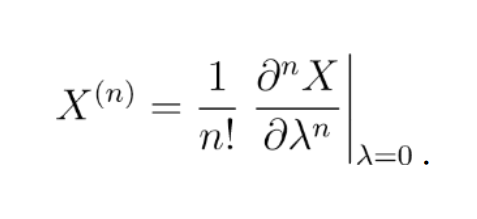Numerical Evidence Invalidating Finite-Temperature Many-Body Perturbation Theory
P. K. Jha, So Hirata
Department of Chemistry, University of Illinois at Urbana-Champaign, Urbana, Illinois 61801, USA
Email: punit2@illinois.edu
Several low-order perturbation corrections to the grand potential and internal energy of a molecule at a finite temperature are determined numerically as the λ-derivatives of the respective quantity calculated exactly (by thermal full configuration interaction) with a perturbation-scaled Hamiltonian, Hˆ0 + λVˆ (λ is a coupling constant) as

(1)
The data thus obtained serves as a benchmark against which analytical formulas can be validated. The firstand second-order corrections from finite-temperature many-body perturbation theory based on Matsubara Green’s function [1] disagree with these benchmark data, calling into question the validity of this theory discussed in a number of textbooks [2, 3, 4]. The renormalized finite-temperature perturbation theory by Hirata and He [5] is also found to be incorrect.
References
[1] Matsubara, T. Prog. Theor. Phys. 1955, 14(4), 351–378.
[2] March, N.; Young, W.; Sampanthar, S. The Many-body Problem in Quantum Mechanics; Dover Publications, New York, 1995.
[3] Fetter, A.; Walecka, J. Quantum Theory of Many-particle Systems; Dover Publications, New York, 2003.
[4] Blaizot, J. P.; Ripka, G. Quantum Theory of Finite Systems; The MIT Press: Cambridge, Massachusetts, 1986.
[5] He, X.; Ryu, S.; Hirata, S. J. Chem. Phys. 2014, 140(2), 024702.